Fake Converses often lack important details like inner tongue patches, the signature treading, or have badly-printed, misplaced logo patches. They’re usually poorly-constructed, showcasing loose stitching, jaggedly-cut insoles, or faded, uneven paint. Finally, they might have mismeasured visuals and a flimsy insole.
I don’t mean to be an alarmist, but here’s an inconvenient truth.
Converse shoes get counterfeited.
No, not just the expensive collabs. I’m talking about the ubiquitous, everyday sneakers. So yes, your Chuck Taylors could be fake.
Now the good news.
Since counterfeiters know that you can get the real deal for around $60, they want to undercut that by at least half, which also means they’ll take as many sneaky shortcuts as possible.
Let me show you how to find where these shortcuts are often made.
Here are some tell-tale signs of a fake Converse.
Table of Contents
3 Easy Ways to Spot Fake Converse
1. Check the Details, Inside and Out, Under and Over
The Tongue
Start by taking a look at the interior top part of the tongue. Whether it’s a high-top or low-top, there should be a patch sewn on there that displays the model number, size, QR code, and a serial number. Each shoe has a unique number. Make sure all of this info is on that patch.
A lot of counterfeits won’t have one on the inner tongue, and if the maker bothered to put one on, it’ll likely have inconsistent information, bad printing, or loose stitching.
The Insole
Next, analyze the insole. First, it should be the same color as the lining. Sometimes they fade from wear, but if it’s a supposedly brand new shoe, the lining and the sole will in fact be tonal.
On a real Converse, the insole also has the brand name printed crisply, cleanly, and design-perfect. This means an all-caps situation in a dark navy hue, or white if the shoe is in a darker colorway like the all black monochrome.
The Treading
Now, check the rubber outsole. Do a quick Google image search to ensure that the pattern is accurate on the shoe you’re looking at. This is one of the brand’s signature features, so it should be impeccably implemented.
There are two isolated “windows” of treading. Within one window, you’ll see straight lines creating a square pattern on the toe area, then beyond that, a distinct diamond pattern, then the logo. Make sure this logo is accompanied by an asterisk at the corner. This is another small detail many fakes don’t have.
The next window is much smaller, and at the heel, showcasing the same diamond treading at the top, then the squared, straight lines at the edge of the heel.
Both of these windows are framed by diagonal-line treading.
The Iconic Logo Patch
And finally, take a close look at the iconic logo patch on the inner ankle of the shoe. If it’s on the outer ankle, it’s obviously a forgery—and a lazy one at that. Just make sure that the printing is flawlessly executed, both in alignment and crispness.
The top prong of the star should be pointing at the space between the V and the E from the Converse appellation above it, while the bottom ends point at the L, and in between the A and the R, respectively, from the All Star moniker below it.
The cursive Chuck Taylor marking is also a great place to look, since the font is so thin and delicate. It’s often difficult for fakers to get right, whether they make it too thick and chunky or too fuzzy.
Whether you go for high-tops or low-tops, Converse Chuck Taylors All Stars are ubiquitous casual sneakers. They have a vintage, youthful aesthetic, but are still fashionably relevant.
2. Analyze the Construction
The Stitching
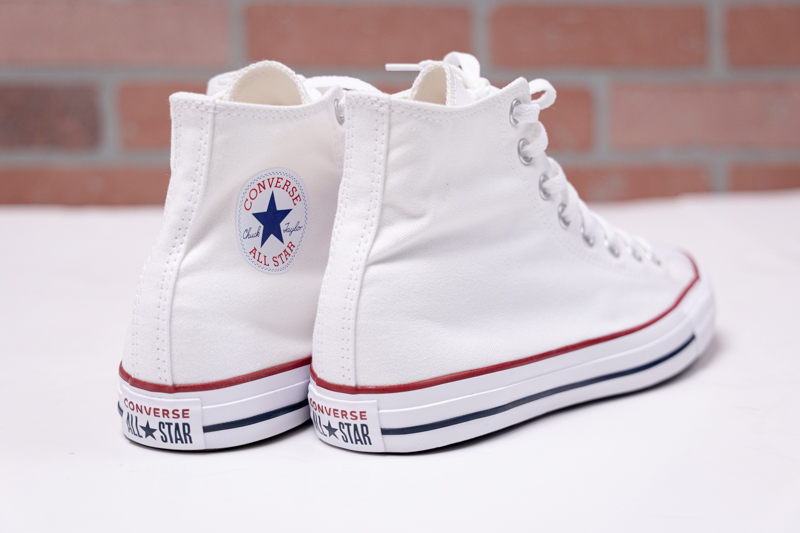
Look for any obviously loose stitching on the upper.
Again, in order to make a profit on a $20 or $30 fake, a lot of construction shortcuts have to be made. They’ll often make these in places that aren’t always easy to see, and most people don’t notice a loose stitch.
Moreover, the stitching is usually white, unless it’s a non-white monochrome colorway, on which they’ll then use stitching that’s tonal with the shoe. Just make sure that’s the case with the shoe you’re looking at.
A really obvious place to check is the tongue’s border. Its zig-zag style is a touch more complicated, and not always worth a counterfeiter’s time. Is it crooked, loose, or not even there? That’s a capital F fake.
The Toe Cap
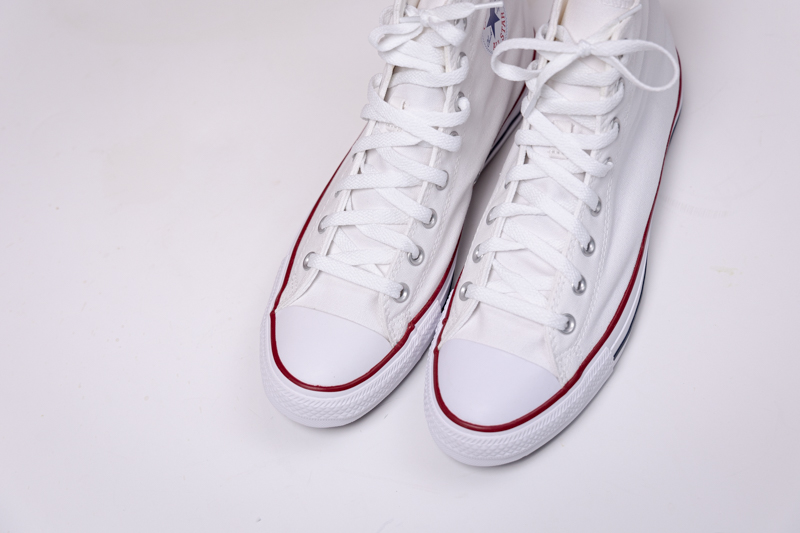
Ironically, you can find a lot of template stray-aways on the more emblematic elements.
Bend the toe cap. It’s made out of gum rubber, so it should be strong enough to flex easily, but not break. It’s also well-glued, so it shouldn’t come off when you bend it or when it gets wet. Of course, any excess glue mess is a big red flag.
Now take a look at the “grill” beneath the cap, on the sole. Accept no deviation from the following: The rubber toe caps on the Chucks should be topped with a thin layer of crosswise lines, a diamond pattern beneath that, and a tighter diamond arrangement below that.
The Chuck Taylor All Star Classic is just that: a classic! It’s stylish, solid, and comfortable, and pretty iconic. I love my pair, and I wear them often. The quality is good, considering the price, but the main reason to get these sneakers is for the style.
The Painted Sole
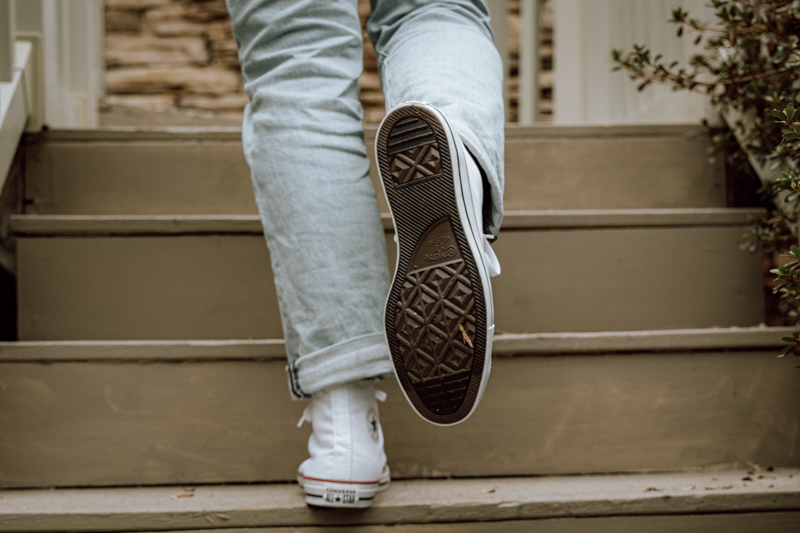
Like the printing on the patch, the signature painted line around the sides of the outsole should be solid, straight, and clean.
You’ll notice that fakes often have sloppy painted lines or poorly printed ones that look super faded.
Cutting Errors
If you see any jagged cuts on any edges, it’s either a knock-off or a defect that’s returnable.
The best place to look is the insoles. Pull them out and make sure the edges are clean with no machine cutting errors.
Relatedly, a lot of fake Converse shoes have thin insoles, which takes us to the next tip.
3. Do Some Measuring
Tying both the first and second tips together, real Converse shoes are super specific.
If you’re able, you can measure certain parts that are always built the same. The logo patch on the inner ankle is exactly 1.9 inches.
Secondly, due to its weaker construction, which again, can be seen via the flimsy insole, a counterfeit tends to weigh less. You can often feel the substance when you hold a Converse in your hand, but to be specific, a real Converse model shouldn’t weigh less than 10 ounces.
How to Tell If Comme des Garcons Converse Are Fake
You can basically use all of the previously-mentioned tips to tell whether or not a pair of Comme des Garcons Converse are fake or real. In addition to that, look for the below details as well.
- The patch in the inside of the tongue will also have the Comme des Garcons PLAY Heart on it.
- Ensure that the shoe is a whole size, since these versions don’t come in half sizes.
- An extra measurement to take is the distance between the two metal eyelets on the inner sides, which should be 1.5 inches at minimum.
- Inspect the PLAY Heart on the side of the shoe for two features. First, the pupils on the heart’s eyes should be imperfect, as if hand-painted on (counterfeiters often make perfect circles to throw buyers off). Second, the top should almost touch the stitching by the lip.
Real Converse vs Fake
If you look at the above image, you’ll notice that there’s no logo patch on the inner ankle. Whether or not there’s one on the outer ankle doesn’t matter, it’s definitely not a real Converse shoe.
Now if you look at the below image, you get to see a fake and legit shoe side by side. The one on the right, with the inner logo patch, is, of course, the true-blue Converse.
In the above image, the soles on the knock-off do an okay job of copying the actual Converse tread but there’s no logo stamp in the middle.
Sure, it looks pretty used up, but if you look at the below image, which is an authentic Converse shoe, the logo is embossed pretty deeply and shouldn’t wear out faster than the diagonal lines framing the two tread windows.
Remember when I told you not to accept anything other than the previously-described toe-cap grill? The above image is the perfect example of what not to accept. It’s just two thin layers of sort-of vertical lines.
Compare it to the below image of the real model. It’s the iconic three-layer design that we expect from Converse.
Get the Real Deal
Some counterfeits are better than others. But, it’s very rare that they’ll nail every single detail.
Remember, they’re trying to make a profit.
Other more obvious aspects to consider is the packaging and where you buy the shoe.
Is it wrapped in random plastic, instead of the proper branded box? Suspect. Did you buy it from an Amazon seller with bad reviews or someone’s car trunk in a back alley? Also suspect.
Even if you’re just going for the look, it’s worth going for a well-built shoe, and a fake Converse isn’t it.
The Chuck Taylor All Star Classic is just that: a classic! It’s stylish, solid, and comfortable, and pretty iconic. I love my pair, and I wear them often. The quality is good, considering the price, but the main reason to get these sneakers is for the style.
FAQs
Is Converse Made in Vietnam Original?
Yes, legit Converse shoes can be made in Vietnam, India, China, or even Indonesia. If it’s made anywhere else, it’s fake.
Do Converse shoes have a logo on the inside or outside?
Converse shoes have a logo patch on the inner ankle of the shoe, not the outer ankle.
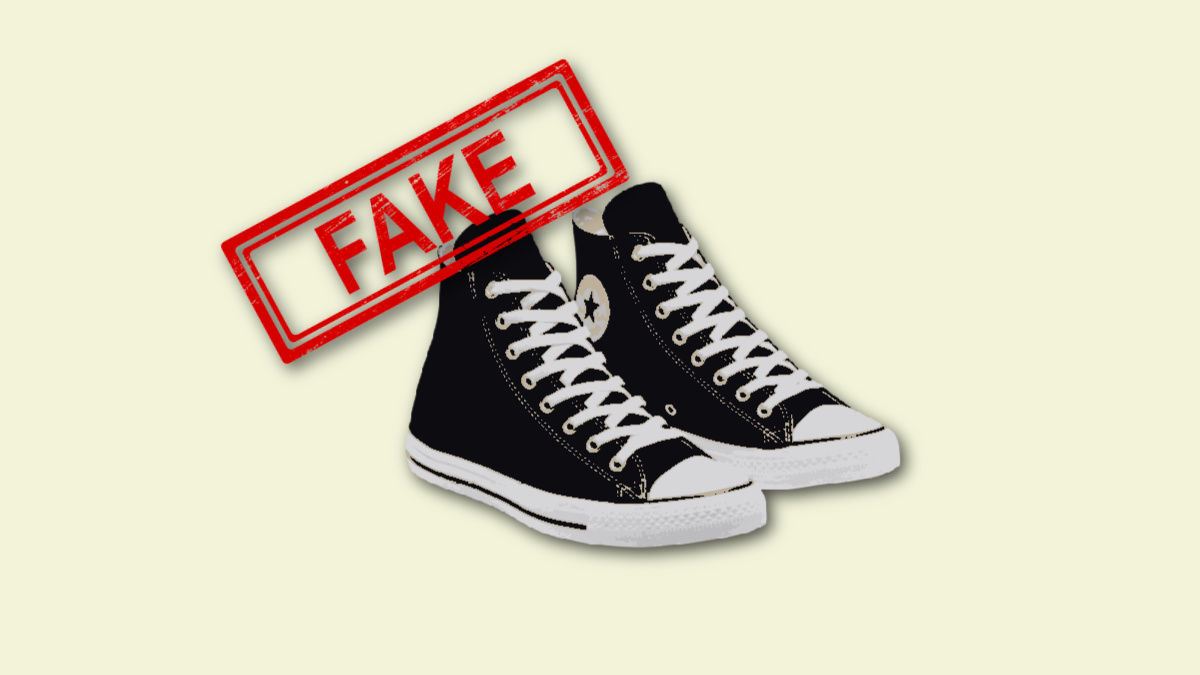
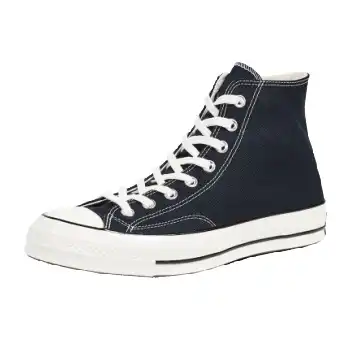
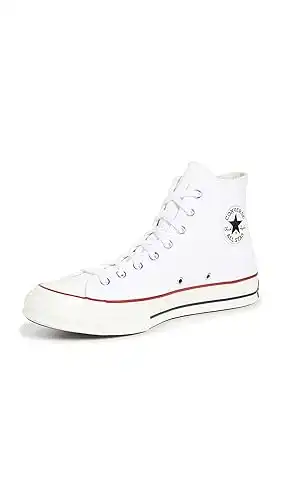


Join the Discussion